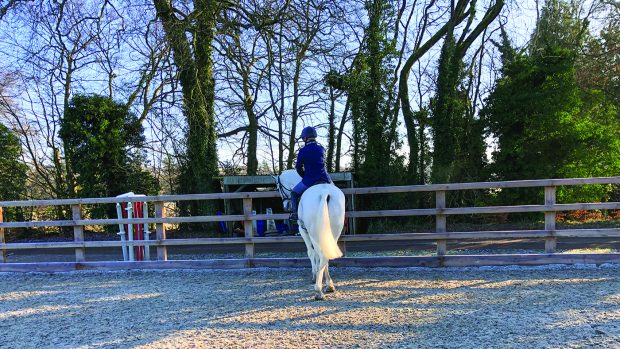Dressage Olympian Richard Davison highlights his pressure and release techniques, which he uses daily in his training
How many times have you put on a pair of tights or a pair of glasses only for them to feel ‘foreign’ yet hours — or sometimes minutes — later you can’t even feel them?
Desensitisation goes on all the time, but is there a way of increasing the sensitivity to a particular stimulus, namely the rider using their leg on the horse’s side, or their rein?
Lazy horse training tips
To train a lazy horse, Richard advises starting with the basics.
From halt, give the horse a small aid with both legs. Wait for a second (the second’s gap is crucial). If the horse does not react by stepping forward smartly, then give a second, larger aid. When the horse reacts to this sharper aid, pat him and allow him to go forwards. After a good few strides, bring the horse back to halt and use the small aid to ask him to walk on again.
Within a short space of time, the horse will learn to move freely forwards from the original, small aid.
Once the horse has become more reactive to the small walk aid, ride the same exercise between walk and trot, then walk and canter.
To further refine the use of the leg, the rider can also lean forwards (in an exaggerated way at first, but eventually so subtly so as to be imperceptible from the ground. This broadens the rider’s arsenal and gives them another way of asking the horse to go forward other than the leg.
To increase sensitivity to the rein aid, use a similar exercise: to bring the horse back (from walk to halt, for example), use a small aid down the rein. If he doesn’t respond appropriately — not forgetting allowing that second for the horse to react — then give a larger, stronger aid with the rein. Again use of the upper body can help here. Lean back slightly to teach the horse that moving your weight backwards is asking him to come back to you or slow down — this means that, once refined, the horse should respond to a subtle shift in the rider’s weight, freeing up the reins to do the fine tuning on bend and steering.
Both these exercises ultimately mean that the rider should have to do less in the saddle and be able to sit more quietly while exerting a more subtle yet effective control of the horse.





